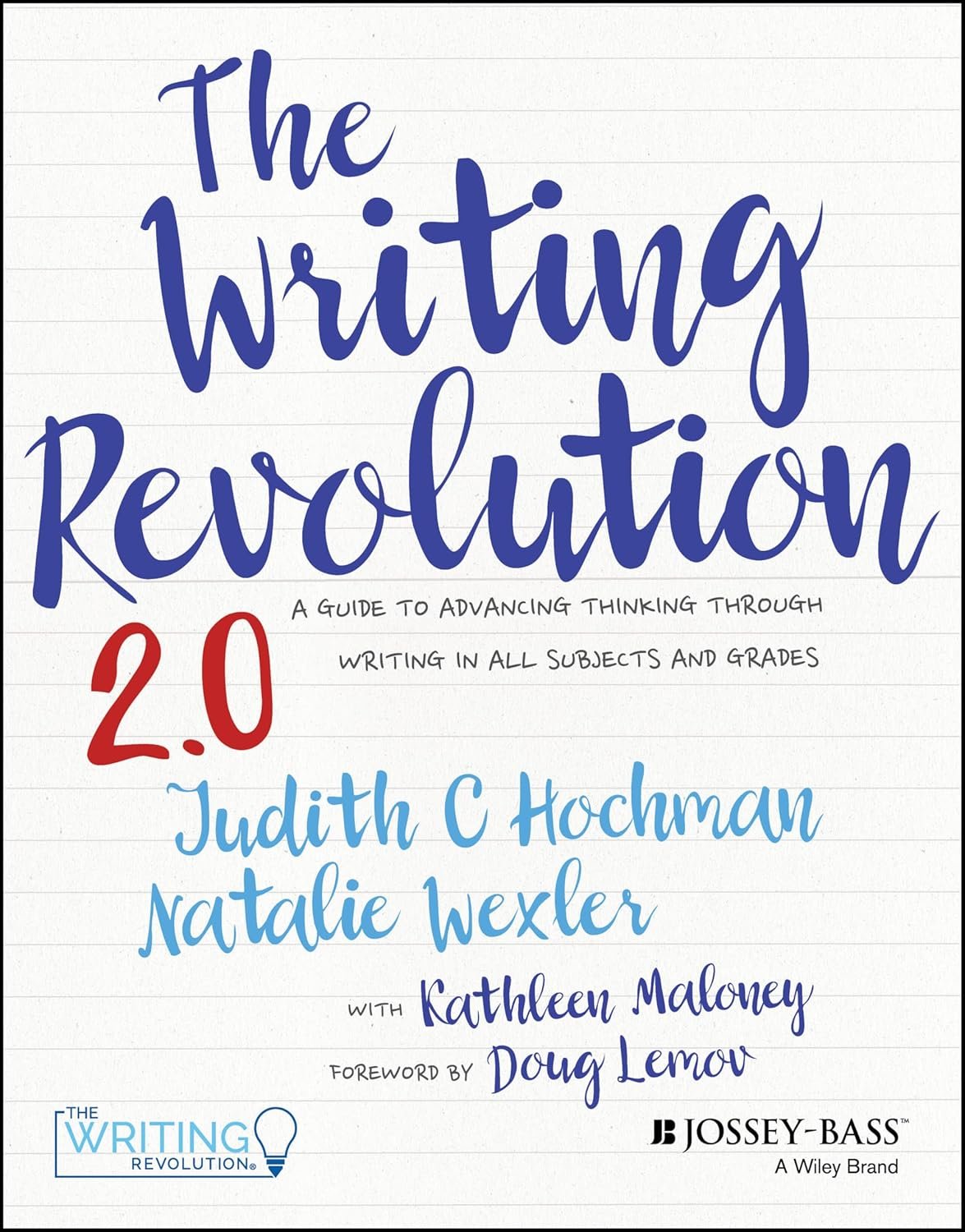
03 Sep Unleashing Potential: How The Writing Revolution 2.0 Transforms Learning Across Subjects
Book Review: The Writing Revolution 2.0
As an avid reader and a lover of the written word, I often find myself pondering the magic of writing—how it can shape ideas, influence minds, and open doors to new worlds. When I stumbled upon The Writing Revolution 2.0: A Guide to Advancing Thinking Through Writing in All Subjects and Grades by Judith C. Hochman and Natalie W. Hochman, I was immediately intrigued. With its promise to transform the way students communicate, I felt a personal tug at my educator’s heartstrings. After all, good writing isn’t just an academic skill; it’s truly a life skill.
From the moment I cracked open this updated edition, I could see why it has resonated with a community of thousands of educators. The authors take a holistic approach to writing instruction, seamlessly integrating the Hochman Method into everyday teaching. It’s not just a curriculum; it’s a guide that invites teachers to weave writing skills into their existing lessons across a variety of subjects and grade levels. This adaptability is revolutionary in itself—teachers don’t have to reinvent the wheel, but rather enhance their existing practices.
What struck me the most is how Hochman and Hochman make the seemingly daunting task of teaching writing approachable. Their method focuses on breaking down the writing process into digestible chunks, providing a structured pathway for students to follow. They emphasize a scientific approach to literacy, addressing the misconceptions and gaps that often inhibit student progress. This clarity was refreshing, especially in an educational landscape where resources can sometimes feel overwhelming.
The writing style of The Writing Revolution 2.0 is both engaging and accessible. The Hochmans successfully balance instructional rigor with warmth and encouragement. They understand the quirks and challenges of educators, and it shows in their tone. The thoughtful organization of activities builds momentum throughout the book, making it easy to pick up and start implementing immediately. I found myself highlighting numerous passages. For instance, the authors remind us that "writing is thinking made visible," a mantra that encapsulates the essence of their approach and resonates deeply with both educators and learners.
One particularly memorable section shines a light on the importance of providing targeted feedback. This isn’t just about correcting mistakes; it’s about fostering a communication-rich environment where students feel empowered to express themselves. The Hochmans emphasize the power of language not only as a tool for academic success but as a medium for personal expression. They’re not just cultivating better writers; they’re shaping confident thinkers.
I believe The Writing Revolution 2.0 is an essential read for teachers, educational leaders, or anyone interested in nurturing the next generation of articulate communicators. Its significance stretches beyond the classroom; it’s about instilling a passion for expressing thoughts through writing—an invaluable skill in any walk of life.
In reflecting on my experience with this book, I found a renewed excitement about the role of writing in education. Whether you’re a seasoned educator or just starting out, this guide is a warm invitation to join a movement that elevates student voices through the power of written expression. Let us, as educators and readers, lead this writing revolution together!









